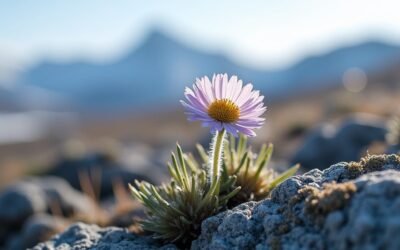To track Arctic bird migration patterns, you'll rely on cutting-edge technologies like GPS and light-level geolocators. These tools provide precise location data and daily migration routes. Analyzing migration maps, created from this data, reveals key pathways, stopover sites, and seasonal habitats essential for conservation planning. Additionally, understanding the weekly migration data helps identify critical timing and population trends essential for protecting these species. Scientists use this information to coordinate global conservation efforts, aiming to mitigate habitat loss and adapt to climate challenges. Exploring further can deepen your insight into these migratory wonders and their preservation challenges.
Main Points
- Utilize GPS and light-level geolocators to monitor individual migrations with high precision.
- Analyze migration maps to identify key pathways, stopovers, and seasonal habitats.
- Collect weekly data to observe timing, routes, and population fluctuations of Arctic birds.
- Implement automated radio telemetry to track larger numbers of radio-tagged birds continuously.
- Use banding and genetic markers to re-identify individuals and gain genetic insights.
Understanding Migration Technologies
To track Arctic bird migrations effectively, researchers employ a variety of sophisticated technologies. GPS satellite telemetry is essential, providing high-accuracy location data for species like the Arctic tern, enabling detailed analysis of their long migration routes. Additionally, Doppler satellite telemetry, which leverages the Doppler Effect, offers another layer of precision in tracking how these birds move across vast distances.
Light-level geolocators, small devices attached to birds, gather valuable daily location data by measuring ambient light levels. This method helps pinpoint the latitude and longitude based on the length of daylight, essential for understanding the migration patterns over months. Automated radio telemetry complements this by tracking radio-tagged birds, allowing researchers to monitor their specific routes and stops during migration.
Banding is another traditional yet effective technique where researchers attach a small, uniquely numbered band to a bird's leg. This helps in re-identifying individuals at different points of their journey. Genetic markers, on the other hand, provide insights into the genetic diversity and population dynamics of migrating birds, enhancing our understanding of their breeding habits and survival strategies. Together, these technologies paint a detailed picture of Arctic bird migrations, vital for their conservation.
Analyzing Migration Maps
By analyzing migration maps, researchers can uncover important details about the pathways, stopovers, and seasonal habitats of Arctic birds. These maps, drawn from data collected via GPS telemetry and geolocators, provide a visual representation of the routes birds take during their seasonal journeys. You'll see not just the broad migration routes but also the precise locations where these birds rest and refuel.
As you explore these maps, you're also immersing yourself in a pool of essential information that helps in behavior analysis of Arctic birds. Understanding where these birds choose to stop and how long they stay can tell you a lot about their habitat preferences and the ecological conditions they need. This isn't just academic knowledge; it's critical for framing effective conservation strategies.
Moreover, the tracking studies reflected in these maps shed light on how environmental changes affect the birds' migration patterns. This insight is essential for habitat protection efforts, ensuring that conservation measures are timely and relevant. By safeguarding crucial stopovers and breeding grounds highlighted in the migration maps, you're helping to secure the future of these remarkable Arctic navigators.
Seasonal Species Distribution
Having explored migration maps, we now focus on the seasonal species distribution that details where Arctic birds reside at different times of the year. You'll find that Arctic birds, including the iconic Arctic tern, have remarkable migration patterns that span the globe.
During the breeding season, these birds migrate to their breeding grounds in the Arctic, where they nest and reproduce under the midnight sun. This area provides essential habitat for raising their young in relative isolation from predators.
As the seasons change, the Arctic tern and others begin a journey to their wintering grounds, often located in different hemispheres. Here, milder conditions help them survive the harsh winter months. This extensive travel isn't without its challenges. Arctic birds face long distances, shifting habitats, and varying climate conditions, all of which impact their survival and migration patterns.
Understanding these patterns is important for conservation efforts. It helps researchers and conservationists track population trends and implement habitat protection measures. By studying where these birds are at different times of the year, you're contributing to a broader understanding that safeguards the survival of these species amidst environmental changes and threats.
Tracking Individual Migrations
With advanced technologies like GPS and light-level geolocators, researchers now track individual Arctic bird migrations with unprecedented precision. By utilizing GPS satellite telemetry and Doppler satellite telemetry, scientists can follow migration pathways that span across continents with amazing detail. For instance, the Arctic tern, known for its incredible 70,000-kilometer roundtrip journey, can be monitored closely to observe individual bird behaviors throughout its migration.
These technologies not only map out precise routes but also help in smoothing the data. By applying filters and setting a 100 km tolerance for line smoothing, researchers transform raw data points into coherent, reliable migration patterns. This process ensures that the information reflects true movements rather than discrepancies caused by locational errors or outliers.
This detailed tracking is essential for understanding how Arctic birds cope with different environments and challenges during their migrations. Insights gained from tracking individual migrations feed directly into conservation strategies, helping to address specific conservation needs. By knowing exactly where these birds travel, conservationists can better design interventions that align with the birds' natural behaviors and habitats, ensuring that efforts are as effective as possible in preserving these remarkable species.
Migration Patterns Weekly Data
Now, let's focus on the weekly data surrounding Arctic bird migration patterns, which reveals species movements, locations, and abundance. You'll find that tracking tools are indispensable in shedding light on the timing and routes of these migrations. By observing these patterns weekly, you gain a nuanced understanding of how Arctic birds navigate vast migration distances and the specific habitats they rely on during their journeys.
The weekly data not only maps out where these birds are at different times but also highlights the seasonal movements that are important to their survival. For instance, you might notice a surge in numbers at certain stopover sites, indicating critical resting and feeding grounds. This information is essential for piecing together the broader ecological puzzle of the Arctic region.
Furthermore, this continuous stream of data helps in identifying trends and fluctuations in bird populations. You're not just looking at numbers; you're getting a clearer picture of the health and dynamics of these species. Each week tells a part of the story, from the departure from breeding grounds to the sometimes perilous trek to warmer climates. Understanding these patterns is key to appreciating the complex ballet of nature that's Arctic bird migration.
Arctic Bird Conservation Insights
Arctic bird conservation efforts are essential as these populations face increasing threats from climate change and habitat loss. As you dive deeper into the nuances of these challenges, you'll understand that the survival of species like the Snow Bunting and Red Phalarope hinges on effective conservation strategies. These birds depend on specific breeding habitats, which are increasingly vulnerable to the adverse effects of climate change.
Conservation efforts are multifaceted, involving the tracking of migration patterns to gather critical data that shapes conservation strategies and informs population assessments. By understanding where and how these birds migrate, conservationists can pinpoint key areas where intervention is most needed. This approach ensures that efforts aren't just scatter-shot but are strategically targeted where they'll do the most good.
Moreover, collaborative research plays a pivotal role in these conservation endeavors. Scientists from around the globe come together to share insights, pool resources, and synchronize their efforts to mitigate habitat loss and counteract climate change impacts. This united front amplifies the effectiveness of conservation initiatives, offering a beacon of hope for Arctic bird populations amidst growing environmental challenges. You're witnessing a concerted push to safeguard these incredible creatures and their ecosystems for future generations.
Frequently Asked Questions
How Do You Track Bird Migration?
To track bird migration, you'd typically use technologies like GPS and light-level geolocators to monitor migration timing, flight altitude, and nocturnal movements. These tools help achieve a thorough understanding of ecological impacts, weather effects, and habitat preferences, crucial for developing effective conservation strategies.
Additionally, collaborating with researchers and using platforms like eBird provide insights into broader population dynamics. This approach guarantees a holistic understanding of migration patterns, aiding in the protection of these species.
What Is the Tracking Device for Bird Migration?
When you're selecting a tracking device for bird migration, consider factors like:
- Device durability
- Attachment methods
- Signal range
- Battery life
- Data accuracy
- The impact of weather
It's important to choose devices that are robust and reliable under varying environmental conditions.
Additionally, ethical considerations should guide the attachment process to guarantee minimal impact on the birds.
Each factor plays a significant role in the successful monitoring and study of migration patterns.
What Arctic Bird Has the Longest Migration of Any Bird?
The Arctic tern holds the record for the longest migration of any bird.
You might find it fascinating that during its lifespan, which can reach up to 30 years, it faces various migration challenges.
These include changing climate impacts on their feeding zones and breeding habits.
Their survival strategies are vital, not just for life but also for the conservation efforts aiming to understand and mitigate these challenges.
What Is the App for Migrating Birds?
If you're curious about tracking migrating birds, eBird is your go-to app. Its user-friendly interface lets you access real-time data and extensive geographic coverage.
You'll find app functionalities that support both conservation efforts and educational content, enhancing your understanding of migration patterns. The community features allow interaction with fellow bird enthusiasts, making it a valuable resource for both novice and expert birders seeking to contribute to global bird conservation.
What Are Key Tips for Tracking Arctic Bird Migration Patterns Effectively?
Tracking Arctic bird migration patterns effectively requires advanced technologies like GPS tagging, collaborative research, and consistent data analysis. Focusing on weather conditions and food availability also provides valuable arctic bird migration insights, helping scientists understand routes, timing, and the impact of climate change on these species. Maintaining accurate records ensures more predictable tracking models.
Conclusion
As you've explored, tracking Arctic bird migration isn't just about understanding their paths; it's about safeguarding their future. By utilizing advanced technologies and analyzing migration data, you're contributing to crucial conservation efforts.
Each mapped route and seasonal pattern you scrutinize helps illuminate the challenges these species face. So, keep attentive to the weekly migration updates—they're the puzzle pieces to conserving the majestic rhythms of the Arctic avian world. Your role is pivotal.


